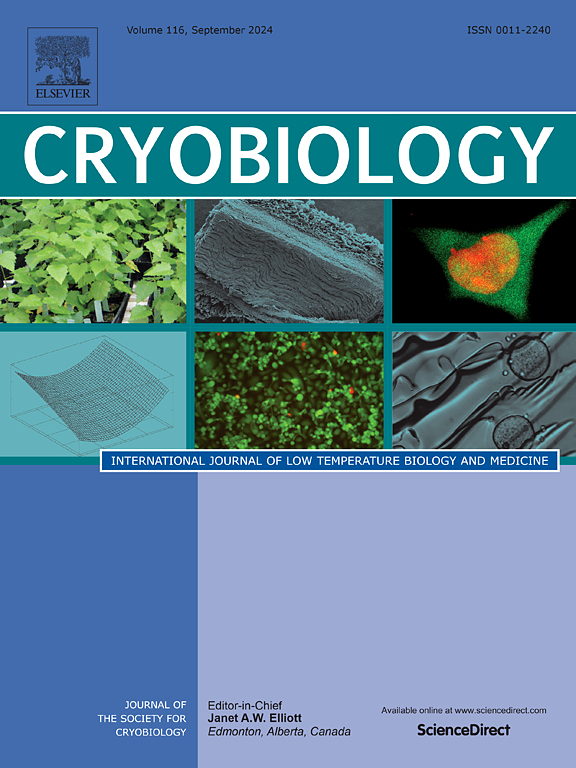基于dft的冷冻保护剂评估及其在冻干成功中的作用
IF 2.1
3区 生物学
Q2 BIOLOGY
引用次数: 0
摘要
冷冻保存和冻干是保存和运输生物样品,包括细菌培养必不可少的。由于冰晶的形成会破坏细胞结构,这些过程面临着严峻的挑战。冷冻保护剂(CPAs)通过抑制冰核和生长来减少这种损害是至关重要的。本研究考察了各种cpa的使用,重点研究了它们在冷冻和冻干过程中提高凝固芽孢杆菌和嗜热链球菌存活的能力。利用密度泛函理论(DFT)分析了水分子间的相互作用。我们选择cpa(蔗糖、果糖、葡萄糖、果糖和甘油)来预测它们在细菌细胞周围形成保护性水合物壳的有效性。结果表明,在低温下具有较低的吉布斯溶剂化自由能的蔗糖提供了最有效的冷冻保护。实验验证表明,12%的蔗糖溶液可以提高细菌在冻干后的存活率。我们还研究了不同冷冻方案对细菌存活的影响。在- 18°C的初始冷冻和随后的- 80°C的储存是最佳的方法,最大限度地提高细胞存活率。这些发现有助于加深对冷冻保存和冻干过程的理解,在生物技术和生物医学领域具有潜在的应用前景。本文章由计算机程序翻译,如有差异,请以英文原文为准。
DFT-based evaluation of cryoprotectants and their role in lyophilization success
Cryopreservation and lyophilization are essential for preserving and transporting biological samples, including bacterial cultures. These processes face severe challenges due to the formation of ice crystals that can damage cellular structures. Cryoprotectants (CPAs) are vital in reducing this damage by inhibiting ice nucleation and growth. The present study examines the use of various CPAs, focusing on their ability to enhance the survival of Bacillus coagulans and Streptococcus thermophilus during cryo-freezing and lyophilization. Using density functional theory (DFT) calculations, we analyzed interactions between water molecules. We selected CPAs (sucrose, fructosofuranose, glucose, fructose, and glycerol) to predict their effectiveness in forming protective hydrate shells around bacterial cells. Our results indicate that sucrose, which has a low Gibbs free energy of solvation at low temperatures, provides the most effective cryoprotection. Experimental validation showed that a 12 % sucrose solution improves bacterial survival after lyophilization. We also investigated the effect of different freezing protocols on bacterial survival. Initial freezing at −18 °C and subsequent storage at −80 °C were the optimal methods, maximizing cell survival. The findings contribute to a deeper understanding of cryopreservation and lyophilization processes, with potential applications in biotechnology and biomedical fields.
求助全文
通过发布文献求助,成功后即可免费获取论文全文。
去求助
来源期刊

Cryobiology
生物-生理学
CiteScore
5.40
自引率
7.40%
发文量
71
审稿时长
56 days
期刊介绍:
Cryobiology: International Journal of Low Temperature Biology and Medicine publishes research articles on all aspects of low temperature biology and medicine.
Research Areas include:
• Cryoprotective additives and their pharmacological actions
• Cryosurgery
• Freeze-drying
• Freezing
• Frost hardiness in plants
• Hibernation
• Hypothermia
• Medical applications of reduced temperature
• Perfusion of organs
• All pertinent methodologies
Cryobiology is the official journal of the Society for Cryobiology.
 求助内容:
求助内容: 应助结果提醒方式:
应助结果提醒方式:


